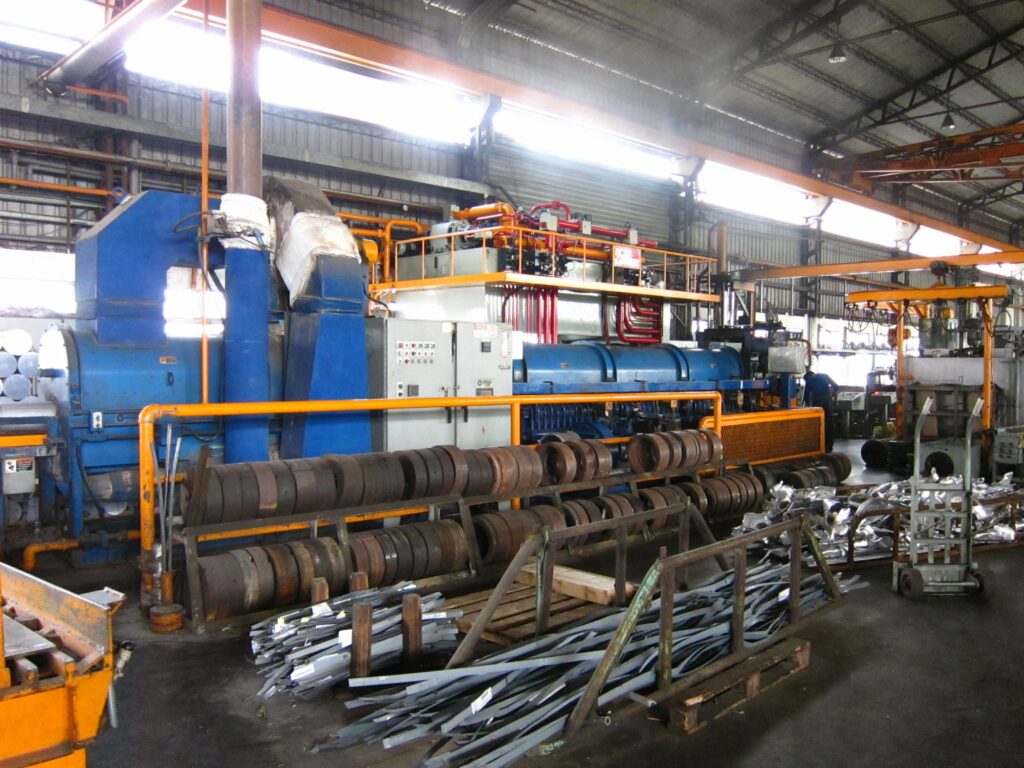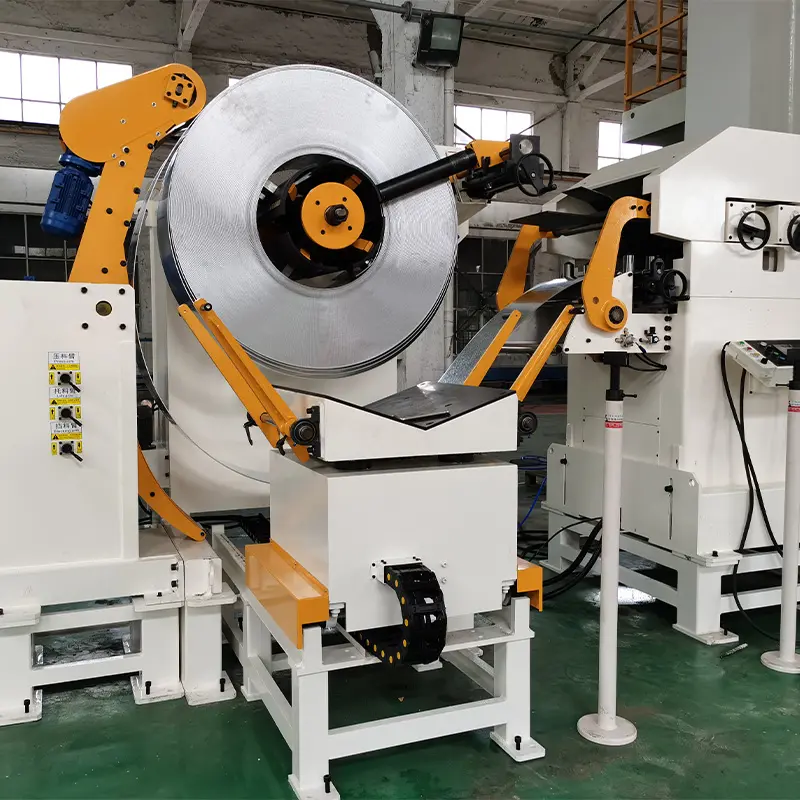Overview of Industrial Roll Forming Machines
Industrial roll forming machines play a crucial role in modern manufacturing, offering efficient and precise metal forming capabilities. These machines are essential for producing consistent and high-quality metal components used in various industries, including automotive, construction, and aerospace. This comprehensive guide will delve into the intricacies of industrial roll forming machines, covering everything from specific metal powder models to their applications and maintenance.
What is an Industrial Roll Forming Machine?
An industrial roll forming machine is a piece of equipment used to continuously bend a long strip of metal sheet (typically coiled steel) into a desired cross-section. The machine uses a series of mated tool dies, or rolls, to shape the metal as it passes through the machine. This process is highly efficient and ideal for producing large volumes of uniform, precision parts.

Types of Precision Roll Forming Machines
| Type | Description |
|---|---|
| Single-Level Roll Forming Machine | Ideal for simple profiles, cost-effective, easy to operate. |
| Dual-Level Roll Forming Machine | Can produce two different profiles, saving space and increasing efficiency. |
| Multi-Profile Roll Forming Machine | Capable of producing multiple profiles with quick changeover times. |
| High-Speed Roll Forming Machine | Designed for high production rates with minimal downtime. |
| Servo-Electric Roll Forming Machine | Offers precise control over forming operations with programmable settings. |
| Portable Roll Forming Machine | Compact and mobile, suitable for on-site applications. |
| Automated Roll Forming Machine | Integrated with automation systems for seamless production. |
| Heavy-Duty Roll Forming Machine | Built for forming thicker and harder metals. |
| Flexible Roll Forming Machine | Adaptable to various profile requirements with advanced flexibility. |
| Hybrid Roll Forming Machine | Combines features of different machines for versatile operations. |
The Working Process of High-Speed Roll Forming Machines
High-speed roll forming machines are designed to enhance productivity while maintaining precision. Here’s a step-by-step overview of their working process:
- Material Feeding: The metal coil is fed into the machine.
- Roll Forming: The material passes through a series of roll dies that progressively shape it.
- Cutting: The formed metal is cut to the desired length using an integrated cutting mechanism.
- Unloading: The finished product is unloaded for packaging or further processing.
High-speed machines are equipped with advanced sensors and control systems to ensure consistency and quality at every stage.
Key Components and Their Functions
| Component | Function |
|---|---|
| Roll Dies | Shape the metal as it passes through the machine. |
| Feeder | Ensures continuous and smooth feeding of the metal coil. |
| Cutting Mechanism | Cuts the formed metal to specified lengths. |
| Control System | Manages machine operations and settings. |
| Sensors | Monitor the process to maintain precision and quality. |
| Drive System | Powers the rolls to move the metal through the machine. |
Machine Speed and Efficiency
| Machine Type | Speed (m/min) | Efficiency (%) |
|---|---|---|
| Single-Level | 20-30 | 85-90 |
| Dual-Level | 25-35 | 88-93 |
| Multi-Profile | 15-25 | 80-85 |
| High-Speed | 50-100 | 95-98 |
| Servo-Electric | 30-50 | 90-95 |
-
 Highway Guardrail End Terminal Forming Machine
Highway Guardrail End Terminal Forming Machine -
 Highway U/C Post Roll Forming Machine
Highway U/C Post Roll Forming Machine -
 2 Waves Highway Guardrail Roll Forming Machine
2 Waves Highway Guardrail Roll Forming Machine -
 3 Waves Highway Guardrail Roll Forming Machine
3 Waves Highway Guardrail Roll Forming Machine -
 Auto Size Changeable Sigma Purlin Roll Forming Machine
Auto Size Changeable Sigma Purlin Roll Forming Machine -
 Auto Size Changeable C Z Purlin Roll Forming Machine
Auto Size Changeable C Z Purlin Roll Forming Machine -
 Auto Size Changeable Z Purlin Roll Forming Machine
Auto Size Changeable Z Purlin Roll Forming Machine -
 Auto Size Changeable C U Purlin Roll Forming Machine
Auto Size Changeable C U Purlin Roll Forming Machine -
 Electrical Cabinet Frame Roll Forming Machine
Electrical Cabinet Frame Roll Forming Machine
Customized Mechanical Parameters
| Parameter | Options |
|---|---|
| Material Thickness | 0.2mm – 10mm |
| Profile Width | 20mm – 1000mm |
| Roll Diameter | 50mm – 300mm |
| Number of Stations | 10 – 50 |
| Forming Speed | 10m/min – 150m/min |
| Power Requirement | 5kW – 100kW |
Applications and Uses
| Industry | Application |
|---|---|
| Automotive | Body panels, chassis components |
| Construction | Roofing, wall panels, gutters |
| Aerospace | Aircraft parts, structural components |
| Appliance | Refrigerator panels, washing machine parts |
| Electrical | Cable trays, electrical enclosures |
Installation, Operation, and Maintenance
| Aspect | Details |
|---|---|
| Installation | Requires precise alignment, solid foundation, and electrical setup. |
| Operation | Operators must be trained, follow safety protocols, and understand the control systems. |
| Maintenance | Regular lubrication, inspection of roll dies, and timely replacement of worn parts. |
Suppliers and Price Range Details
| Supplier | Price Range (USD) |
|---|---|
| Roll Forming Corp | $50,000 – $200,000 |
| Formtek Group | $75,000 – $250,000 |
| Samco Machinery | $60,000 – $300,000 |
| ASC Machine Tools | $80,000 – $350,000 |
| Bradbury Group | $100,000 – $400,000 |
How to Choose the Right Supplier
Choosing the right supplier involves considering several factors:
- Reputation: Look for reviews and testimonials from previous clients.
- Customization Options: Ensure the supplier can meet your specific requirements.
- After-Sales Support: Check for availability of spare parts and technical support.
- Price and Value: Compare the cost against the features and benefits offered.
Advantages and Limitations
| Advantages | Limitations |
|---|---|
| High Precision | Initial setup cost |
| Consistent Quality | Requires skilled operators |
| Efficient Production | Limited to specific profiles |
| Versatile Applications | Maintenance requirements |

FAQ
| Question | Answer |
|---|---|
| What materials can be used in roll forming machines? | Common materials include steel, aluminum, and copper. |
| How do I maintain a roll forming machine? | Regular lubrication, cleaning, and inspection are key. |
| What industries use roll forming machines? | Automotive, construction, aerospace, appliance, and electrical industries. |
| Can roll forming machines be customized? | Yes, they can be tailored to specific profile requirements. |
| How fast can a roll forming machine operate? | High-speed machines can operate up to 100 meters per minute. |
Conclusion
Industrial roll forming machines are indispensable in modern manufacturing, offering unmatched efficiency and precision. By understanding the different types, working processes, key components, and how to choose the right supplier, businesses can make informed decisions to enhance their production capabilities. Whether you’re in the automotive, construction, or aerospace industry, investing in a high-quality roll forming machine can significantly boost your operational efficiency and product quality.
Feel free to reach out with any further questions or for more detailed specifications on specific models and suppliers. Happy manufacturing!
